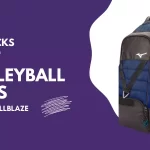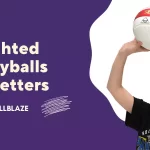A volleyball game can be pretty brutal on your ankles.
I have twisted my ankle on someone else’s foot numerous times after landing on a spike or block.
I wrote an article entitled ‘Should volleyball players wear ankle braces?‘, in which I dispel myths about ankle braces and the science behind them.
In short, you probably should wear ankle braces when playing volleyball.
My goal in this article is to provide you with a list of the best ankle braces for volleyball on the market so you can decide which one is best for you or your child.
Let’s get started!
Best Ankle Braces For Volleyball
Active Ankle T2
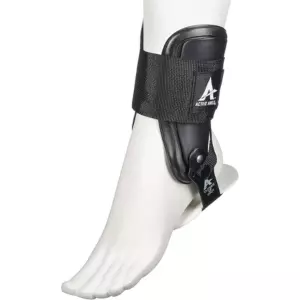
My ankle brace has been the most popular choice among volleyball players for over a decade.
Around 90-95% of volleyball players where I grew up wore Active Ankle’s T2 ankle braces.
Providing support, comfort, and affordability, they’re the perfect choice.
The semi-rigid lateral supports on this ankle brace form a physical barrier around your ankle, preventing it from moving into unnatural or dangerous positions.
Although they take some getting used to, they are actually quite comfortable compared to other options. Once you get used to them, you won’t even realize you’re wearing them.
In 10+ years of using the braces, I never felt as if they interfered with my ability to move on the court because the braces move with your natural movements.
Compared to the alternatives, these ankle braces are also really affordable, so not only are they effective, but they’re also the cheapest semi-rigid ankle braces out there.
The socks are available in both white and black, so you can match them with any socks you like.
No matter what position a volleyball player plays, these can be worn. A great choice for hitters.
The last brace in this article is probably a better option if you’re a libero or setter who only plays backcourt.
Ultra Ankle Ultra High-5
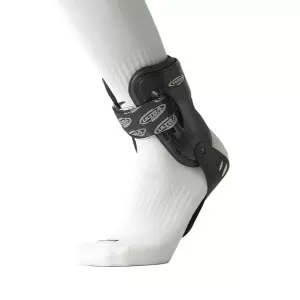
Volleyballers with a history of ankle injuries are said to benefit most from the Ultra High-5 brace.
If you’ve had a lot of ankle sprains in the past and have ankle joint instability, this brace is a good prophylactic option.
The T4 brace is similar in design to the T2 but has rigid side-foot support instead of the T2.
Due to the lack of research comparing the Ultra High-5 to the T2, it is impossible to know whether the extra cost will be worth it.
This brace costs 50% more than the T2, but I will leave that decision to you.
Ultra Ankle Ultra Zoom
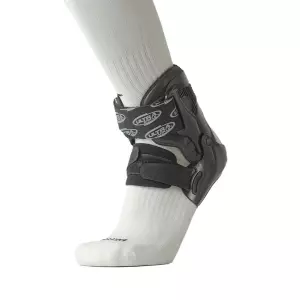
A little more expensive than the T2, the Ultra Ankle offers a slight increase in support compared to the T2.
These ankle braces differ significantly from the T2 in several key ways.
On the Ultra Zoom, you’ll first notice the solid upright supports underneath the foot. Without a better word, the T2 has a flat bottom with no outriggers.
There is also a velcro strap that goes over the front of the foot on the Ultra Zoom, but not on the T2.
In contrast, the Ultra Zoom is made of softer materials than the T2.
In addition to ankle inversion sprains, the Ultra Zoom brace is supposed to prevent syndesmotic injuries (upper ankle).
The T2 does a great job at treating lower/inversion ankle sprains, for which I’ve only had one upper ankle sprain.
In volleyball, upper ankle injuries aren’t particularly common, according to me.
Compared to volleyball shoes, cleats are dominantly used for field sports, which have a greater risk of causing these injuries.
When I see no evidence for these braces (or even anecdotes that I’m aware of), I can’t justify the extra cost.
Mizuno DXS2
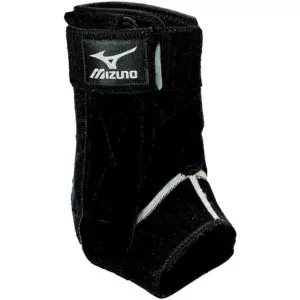
You won’t have to compromise on comfort when you choose the Mizuno DXS2, which offers excellent support.
There are a lot of players who would benefit from these ankle braces, and I think they are the perfect fit for them.
You won’t feel uncomfortable wearing them because the material is soft, breathable, and won’t rub your ankles.
There’s also the option to use rigid side support inserts if you’re looking for a little extra support. There are many users who do not use them since it does a good job even without them.
It’s definitely going to be better than nothing, but you won’t get the same level of support as with the T2 or Ultra Ankles.
Anybody with fewer than five ankle injuries in their lifetime would benefit from these braces.
For younger players, I think opting for a lighter-weight ankle brace is a great option since ankle braces do significantly less work when people don’t have a lot of ankle sprains.
Active Ankle Eclipse II
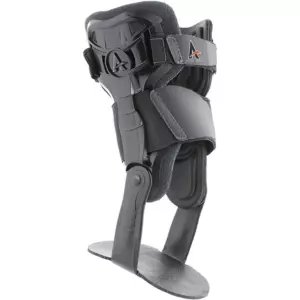
The Eclipse II is an excellent option if you liked the look of the T2 but wanted a little more support. In volleyball, middle blockers, who jump the most, are recommended to wear this ankle brace.
Compared to the T2, these ankle braces are a bit larger and have two Velcro straps.
In my opinion, middle blockers who jump more often than any other position should choose this option.
Any hitter with an ankle injury history would also be well served by the Eclipse II.
I definitely think the extra protection is worth the few extra seconds it takes to put on these braces.
These socks will probably need to be fairly long since they are longer than the T2/Ultra Zoom.
Compared to shorter socks that do not completely cover the brace, this is more comfortable (and less sweaty).
Some players wear such braces with short crew socks and are perfectly content!
The ankle braces would be my first choice if I had to buy another pair as a middle blocker.
Active Ankle 329 Ankle Sleeve

Unless you play primarily in the backcourt, a big and bulky ankle brace isn’t necessary for a libero or setter. Support can be provided by a lightweight sleeve.
To begin with, I strongly discourage liberos and defensive specialists from wearing ankle braces.
These players have a very low risk of ankle injuries.
Bracing your ankles unnecessarily could weaken them, so you should maintain maximum mobility instead.
I would choose a super lightweight ankle support like the 329 sleeve if you are still considering ankle support.
With some straps to provide extra support, this is essentially a glorified ankle sleeve.
In this case, both liberos and backcourt setters benefit from minimal support and maximum mobility on the court.
A 329 sleeve is fine for setters who play both front and backcourt, but I suggest upgrading to the T2 or Ultra Zoom so you’re adequately protected.
Best Volleyball Ankle Braces For Each Position

Honestly, it’s not necessary to break things down by position because there is not much difference between braces and positions, but I have written up my recommendations for each position on the court.
Best Ankle Braces For Middle Blockers
In volleyball, middle blockers must jump more than any other position, since they must block on both wings at the same time.
Moreover, blocking is a recipe for ankle injuries since the player will be drifting in the air more than any other position.
Active Ankle T2s are one of my favorite ankle boots as a middle blocker.
It is still possible for me to sprain my ankles while wearing them but at a much lower rate than before.
Active Ankle T2s or Ultra Zooms are my top recommendations for middle blockers.
If you’ve got dodgy ankles like me, you’re probably better off upgrading to the Eclipse II or Ultra High-5s.
Best Ankle Braces For Wing Spikers
Active Ankle T2s and Ultra Zooms are the best options for these positions.
Mizuno DXS2 is a good option if you haven’t had many ankle injuries, and Eclipse II or Ultra High-5 is a good choice if you do have many ankle injuries.
Best Ankle Braces For Setters
Consider going with the most lightweight option for setters who play primarily from the back row (your team primarily runs a 6-2 offense).
The Mizuno DXS2 or Ultra Zoom is a good choice if you play in the front row.
Best Ankle Braces For Liberos
It is not recommended that liberos wear ankle braces.
A defensive specialist shouldn’t wear ankle braces since 95% of ankle injuries occur when jumping.
An ankle brace may weaken an ankle over time (although that has not been confirmed), so you should avoid wearing one as much as possible.
A lightweight ankle sleeve like the 329 would be a better choice if you wanted some extra support.
You may enjoy reading Volleyball Rotations
What To Consider When Looking For Volleyball Ankle Braces
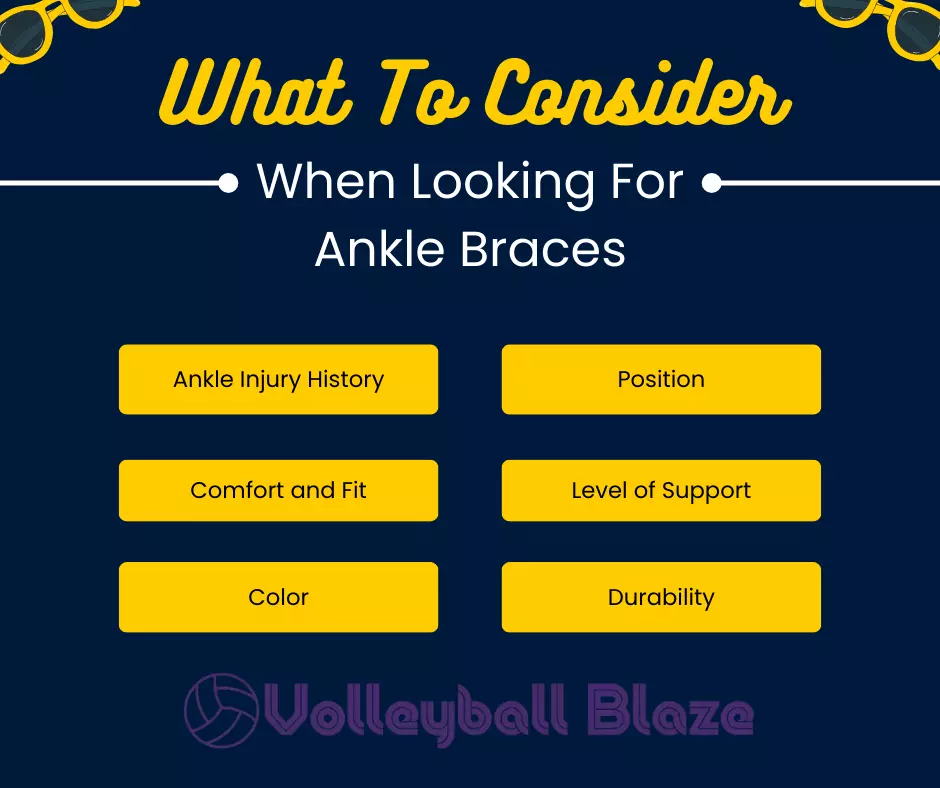
If you’re a volleyball player looking for ankle braces, you need to consider five factors.
The more you consider each of these factors, the more likely you are to get the ankle brace that you really like!
Ankle Injury History
Your sporting career and the frequency of ankle injuries are probably the most important factors to consider.
Choosing a brace for a 25-year-old with 25+ ankle sprains throughout their life is different from choosing one for a 12-year-old with only two ankle sprains.
Studies have found that ankle braces work better at preventing the recurrence of ankle sprains if you have dealt with more sprains over time.
It is unlikely that ankle braces will be effective for prophylactic purposes if you or your child have never suffered ankle sprains before.
The Eclipse II and Ultra High-5 ankle braces are recommended for those with a history of ankle injury, while the Mizuno DSX2, 329 Sleeve is recommended for those who do not, but still wish to wear one.
Position
Volleyball players should also consider how much jumping they do. The most common cause of ankle sprains in volleyball is jumping and landing awkwardly, often on the foot of another player.
The ankle braces worn by middle blockers should be different from those worn by liberos who don’t jump. You should choose ankle braces that are more supportive as you jump more.
In the table above, I break down which ankle brace you should wear based on your position.
Comfort and Fit
In order for an ankle brace to be well-fitted, it should feel snug but not too tight. Comfort during long matches can be achieved by choosing breathable materials and adjustable options.
Level of Support
A variety of ankle braces are available, ranging from mild to rigid. The instability of the ankle should be taken into account when determining which device is right for you.
Color
White and black are the most common colors for ankle braces. If you want to buy ankle braces for your kids, ask them what color they prefer. My word is your bond.
Durability
The durability of your equipment is paramount, especially if you are a dedicated player. For a sport that demands high-quality braces, choose materials that will withstand the demands.
You may enjoy reading Best Volleyball Knee Pads
Benefits of Using Ankle Braces in Volleyball
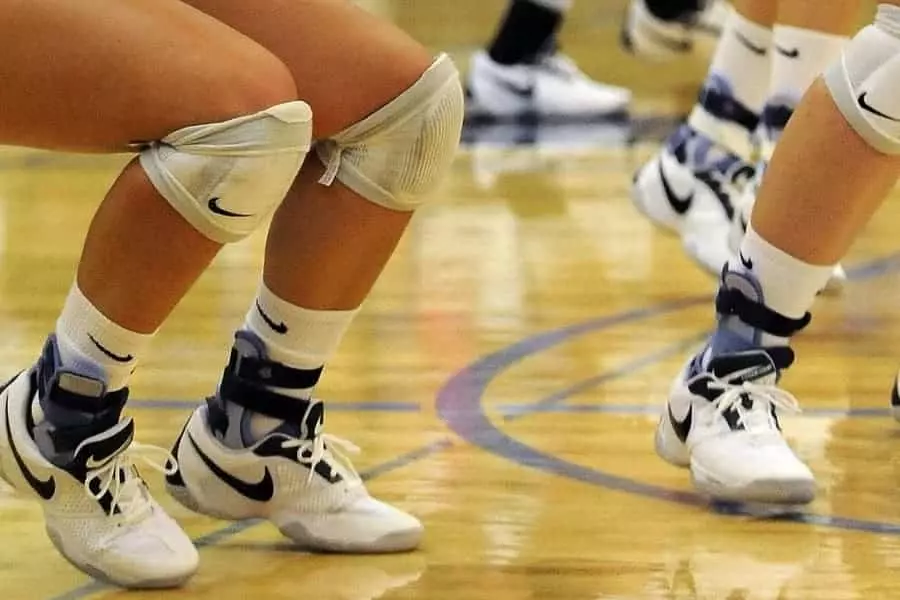
Why You Should Invest in Ankle Braces
For volleyball players, ankle braces can make all the difference. The following are some compelling advantages:
Injury Prevention
Ankle braces serve the primary purpose of preventing injuries. Sprains, twists, and fractures are less likely to occur when your ankles are stabilized.
Enhanced Performance
In addition to providing added confidence, ankle braces allow players to move freely without fear of injury. When a player is confident on the court, he or she can perform better.
Post-Injury Support
By providing additional support during play, braces can help you recover from previous ankle injuries.
FAQs
How tight should I wear my ankle brace for volleyball?
A snug fit is ideal, but it shouldn’t be too tight. Support should be provided by a well-fitting brace without causing discomfort.
Can I wear ankle braces with my volleyball shoes?
The majority of ankle braces are designed to be worn comfortably with volleyball shoes.
How often should I replace my ankle brace?
Generally, ankle braces should be replaced every six months to a year depending on their usage.
Are ankle braces suitable for preventing recurring ankle injuries?
Absolutely. Providing additional stability and support with ankle braces can prevent recurring injuries.
Can I wear ankle braces in other sports besides volleyball?
Volleyball ankle braces are primarily designed to prevent ankle injuries, but they can also be used in basketball and soccer because of lateral movements.
Conclusion
Every brace requires some breaking in and adjustment, and none of them performs better than the other.
So, here are my recommendations, in a nutshell…
Active Ankle T2 or Ultra Zoom are two of the most popular volleyball anklets, both of which are very similar. It is cheaper to choose Active Ankle.
Those who are prone to ankle sprains should consider the Ultra High-5 ankle brace, which seems to be the most effective prophylactic brace. In addition, it is the most expensive.
For maximum protection, you should consider the Eclipse II brace if you are a middle blocker.
Mizuno DXS2 is lightweight and very comfortable if you haven’t had ankle injuries before (less than five lifetime).
The 329 ankle sleeve is the most lightweight option for liberos or setters who play mostly from the back row.

